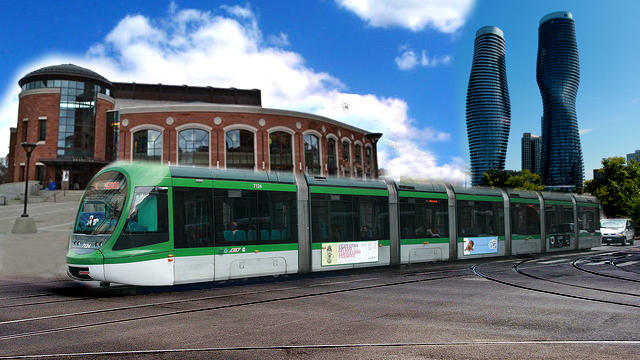Will Brampton and Mississauga Become One City?
Published December 11, 2018 at 4:15 am

Mississauga has often talked about leaving the Region of Peel.
But what if that means potentially amalgamating with Brampton?
While the future of this notion is unknown, it’s not coming out of thin air.
But first, let’s look at some recent developments in Peel:
The recent selection of a former Mississauga councillor as the next chair of Peel Region was anticlimactic to say the least.
Nando Iannicca, recently having completed a 30 year stint as a councillor in Mississauga, was selected over former Ontario finance minister Charles Sousa on the first round of voting, securing 15 votes from the 24 member Peel Regional Council.
What was surprising was that there were no candidates from Brampton who put their name forward. Former regional councillors Elaine Moore and Gael Miles, along with former mayor Linda Jeffrey, were rumoured to be throwing their hats into the ring for the selection process.
Most likely when Sousa announced his intentions, Jeffrey, his former provincial colleague, bowed out in order not to split the vote between two well known Liberal politicians. Moore and Miles would have been long shots as well, since the Brampton contingent for regional council is more on the ‘progressive’ persuasion now that they left office.
Indeed, within that vote the split from Brampton was clear. While Mayor Patrick Brown and Coun. Michael Palleschi voted for Sousa, the other Brampton councillors (Paul Vicente, Rowena Santos, Gurpreet Dhillon, Pat Fortini and Martin Medeiros) all voted for Iannicca.
Former Mississauga mayor Hazel McCallion was in attendance as well in the audience, giving advice to Brown and greeting Sousa prior to the vote.
McCallion has long been a proponent of taking Mississauga out of Peel Region, a position she made an effort in over a decade ago when she had her city staff commission a report suggesting that Mississauga would save $32 million if it was operating as a ‘single tier municipality” without having to send tax dollars to Brampton and Caledon.
This is a position that current Mississauga mayor Bonnie Crombie–and most of her council–has been continuing to advocate for since she took office in 2014. Brampton’s position has always been that their current number of regional representatives is not enough, but Mississauga (which carries majority voting power) has in the past suggested that seats from Caledon be taken and given to Brampton.
Based on that formula, Caledon would have three regional councillors and Brampton would then get at least nine, while Mississauga would stay with their current 12.
However, the issue has now gone beyond just tinkering with how many seats each city has in regional government.
Mississauga has made it very clear that it wishes to leave the Region, while Brampto–now under Patrick Brown–is most likely going to continue with the current formula.
All the more reason that the Brampton councillors’ decision to back Iannicca seems passing strange given that he is more susceptible to backing a discontinuation of regional government in a few years time.
Finally, let’s not forget the presence of Doug Ford over this entire drama. Ford was endorsed by McCallion during the provincial election, and having an elected regional chair would certainly throw a wrench into McCallion’s plans to dissolve Peel Region.
No doubt that McCallion and Crombie would prefer a stand alone City of Mississauga minus regional governance. As for Brampton and Caledon, the idea was that Brampton should adopt the same status that Mississauga would take on, while Caledon be joined with neighbouring Dufferin County.
The other option is putting them all together in one megacity, the so-called “City of Peel.” It sounds wild, but if you think about it, Toronto underwent the same process when the city officially absorbed the suburban neighbourhoods of North York, Scarborough and Etobicoke.
But as the Toronto experiment has shown us, an amalgamated megacity is easier said than done.
Even to this day, Toronto continues to have governance problems, pitting ‘downtown councillors’ against those who represent the inner suburbs of Etobicoke and Scarborough. The ascent of the late Rob Ford as the city’s mayor is a direct result of that forced amalgmation.
A forced merger of Mississauga and Brampton, two cities with two distinct histories of development, may not be as easy as it sounds.
How would you feel about a possible merger?
INsauga's Editorial Standards and Policies


